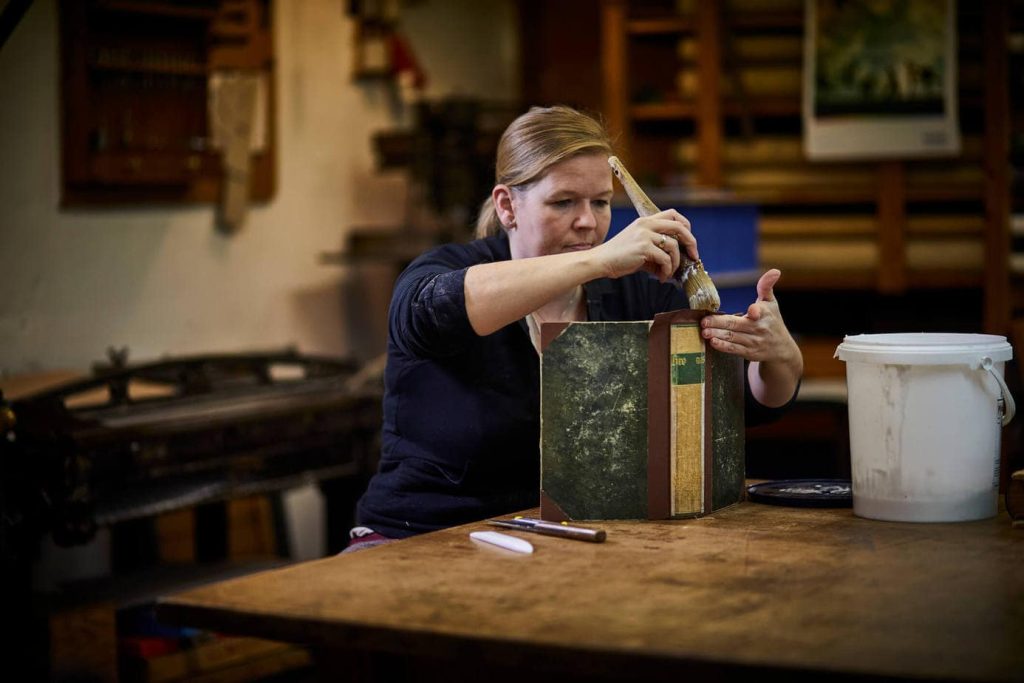It turns out that in times of almost completely automated book production bookbinders are still needed, although there is a noticeable shortage of them on the market. So what is their job?
The first thing that comes to our mind when we think about the profession of bookbinder is, of course, books. In addition to the standard variants of various types of literature, we must remember about copies and artistic editions, gift, rare and exclusive, which can be made of fabric, leather, velvet and other materials – all of them require the involvement of a bookbinder. At the same time, books are not the limit of the possibilities of a true master, who can also make folders, magazines, albums, cases and even board games.
Simply put, it is a person who binds printed materials. Probably the most common image of a bookbinder is sitting on a chair and manually stapling sheets together. This is true if we are talking about unique, exclusive and rather expensive products. However, a bookbinder works in any printing company, design studio or advertising agency and works with machines and various technologies. It is not uncommon nowadays to require knowledge of graphic processing software.
The duties of a bookbinder may include:

The work of a bookbinder requires attention, perseverance, patience and, of course, artistic sense. The main tools of a bookbinder are eyes and hands, so there are medical contraindications to this work, such as disorders of coordination of hand and finger movements and problems with vision.
In the process of publishing books, the most responsible task falls on the bookbinder, so special requirements are placed on him. In his work, the bookbinder must take into account many factors, such as volume, density and other characteristics of binding materials, while having knowledge of their properties and processing. The quality of his work should be very high because the overall appearance of the book depends on him.
Bookbinders usually work in production and bindery workshops within large printing plants or companies. In such places, there is often a pungent smell – ink, glue and paper. In addition, a bookbinder works with sharp tools and materials, and even paper can cause cuts if safety rules are not followed.
It seems that the profession of bookbinding is not much in demand these days. Paper books in printing houses are prepared by machines, and the participation of man in their production is minimal – he acts mainly as service and supervisory staff.
However, there is a sphere where the manual and careful work of a bookbinder is indispensable – archives of institutions and organizations, i.e. various types of documents that require proper storage for even several decades. The classic technology of archival binding has not changed for many years, as well as the materials used in it and the crucial importance of the human factor.
Bookbinders are also sought after as conservators of historic and old works. Museums, libraries and even private individuals are willing to pay for the restoration of editions of historical, collectible or purely sentimental value damaged by the passage of time. The work of such a bookbinder-conservator can be expensive when we are talking about exceptionally valuable and rare copies.
Although the profession is no longer as popular as it used to be and has undergone certain transformations, it will certainly be present on the market as long as books remain in our lives. For now, neither ebooks nor audiobooks pose a threat to the profession.